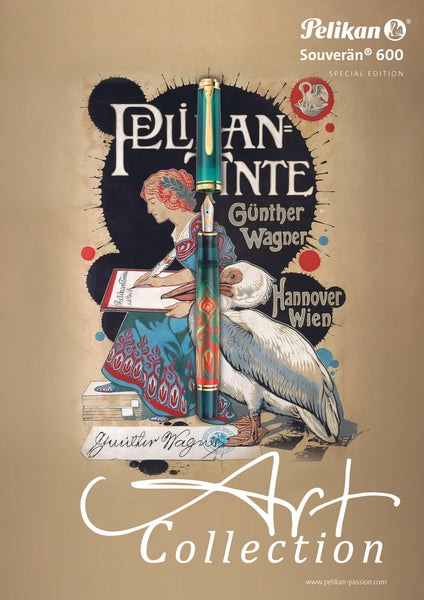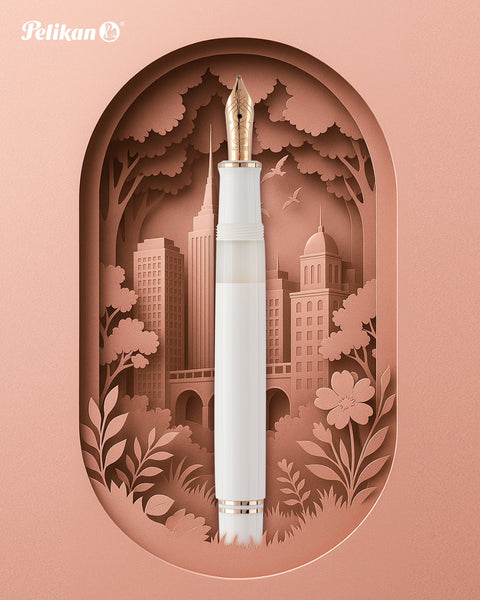LIMITED EDITION "HERZSTÜCK 1929"

Limited Edition - „Herzstück 1929“
Endless mobility
Creative ingenuity. Limitless freedom. Colourful times. Progress drives a generation.
Berlin, Paris, New York: The world’s burgeoning cities with populations in the millions are constantly in motion, with innovations in mobility dictating the speed of travel. Automobiles sail along the streets pulled along entirely without the muscle-power of horses. Count von Zeppelin’s airship circumnavigates the globe, while ocean giants cross the world’s seas and railways connect nations. Inspired by this, in 1929 Pelikan sends a new kind of writing implement on a journey.

Theodor Kovács & Fritz Beindorff
Daring to do new things. An inventor and a visionary prove their farsightedness.
In a shimmering climate of awakening, the engineer Theodor Kovács develops a ground-breaking fountain pen with a differential piston mechanism that resolves the disadvantages of the writing implements that existed at the time. Pelikan’s owner Fritz Beindorff recognizes the significance of the invention, and purchases the patent in 1927. Patent registration follows in Germany in 1928, and just one year later the first Pelikan fountain pen with patented piston mechanism goes into series production.

New revolution
Progressive. Mobile. Pioneering. The new piston mechanism system changes writing culture.
The small turn with the revolutionary impact: The innovative technology with two differing thread leads inside the fountain pen ensures that the shaft turns faster than the grip of the pen. The writing implement can hold a high volume of ink, can be filled more easily and produces no ink blots. The advantages over tube fountain pens that dominated the market previously make it easier for travellers to use the pen.

Herzstück 1929
Iconic. Modern. Exclusive. The limited edition interprets the historic form in a new guise.
With much love of detail, the “Herzstück 1929” pays tribute to the original from the 1920s: The transparent window, the curved Pelikan beak-like clip, the cap with the historic Pelikan logo, and the form and detail of the grip are reminiscent of the revolutionary Pelikan fountain pen.

Clear vision
Extraordinary. Transparent. Thrilling. The large viewing window permits new insights.
The highlight of the Commemorative device is the large viewing window that spans the length of the barrel of the pen. It’s a fascinating design that not only offers a view of the level of ink – as was the case initially with the historic Pelikan fountain pen – but also of the piston itself. Thus, as the ink is drawn into the pen, it’s possible to see the way the piston mechanism works. The piston is gold-plated and marked with the historic patent number.

Piece of gold
Embellished. Refined. Gold-plated. The high-quality materials of “Herzstück 1929” radiate luxury.
Kept entirely in black and gold, the pen appears particularly exclusive. And the same can be said of its materials: Gilded brass and the 18-carat-gold nib ensure that the “Herzstück 1929” shines. The black high-grade resin – the so-called platinum of plastics – is polished with natural diamonds and exerts a self-polishing effect with use. Extreme gloss and the utmost surface hardness characterize the material.

Rare beauty
Limited. Rare. Exquisite. Limited numbers make it coveted the world over.
In honour of the original, the limited edition is based on the historic patent number, for which the last three figures were 462. The complete patent number is engraved on the gilded piston, while the individual edition number – here number 008 – of the total of 462 pieces worldwide adorns the grip ring of each pen. It is proof of the uniqueness of these rare beauties.



